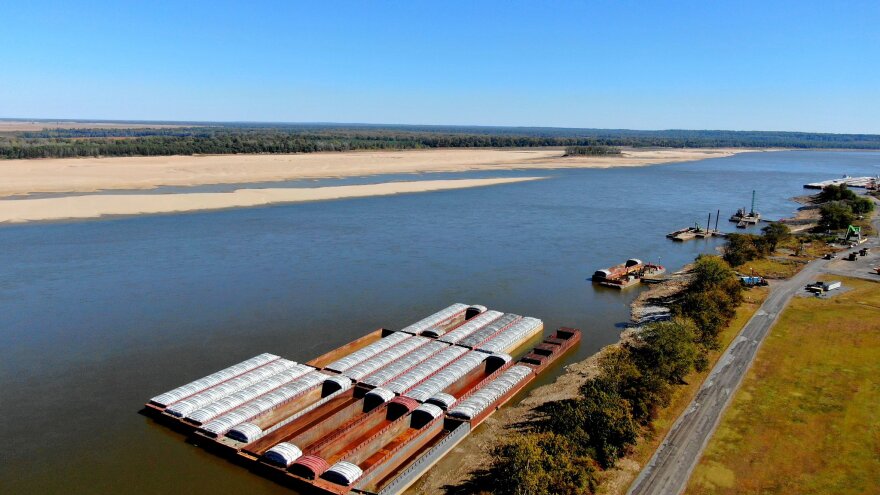Months of drought are making the Mississippi River nearly unnavigable for barges, and that’s creating problems for farmers looking to ship their harvest.
A summer of prolonged drought across the Midwest has led to the low levels. By Oct. 19 the river was 10 feet below normal at Memphis. Vicksburg, Mississippi reported depths as low as one foot.
“Barges are parked, waiting for a turn to try and get through, not only just on the Mississippi River, but the rivers that feed into it, like the Ohio River, the Illinois River,” said Mike Steenhoek, executive director of the Iowa-based Soy Transportation Coalition. “So you see all these areas where the price farmers are being offered has dropped.”
More than half of corn, soybean and wheat exports are shipped from U.S. Gulf Coast export terminals, and much of that arrives by barge. The slowdown on barge movement is taxing an already stressed supply chain.
“Trucks and trains might be an option for some farmers, but it is much more expensive and those modes of transportation are already at or near capacity,” Steenhoek said.
The U.S. Army Corps of Engineers has dredged the river to keep traffic moving, but that has been limited to a depth of nine feet and a width of less than 300 feet. The Coast Guard has also put restrictions in place forcing barges to take on lighter loads.
“The navigation channel is being maintained at the levels we are required to keep it,” said George Stringham, spokesperson for the Army Corps of Engineers St. Louis District. “But there are restrictions in place which means barge traffic is moving slower and loads have to be lighter because there isn’t enough water in the river.”
According to the National Weather Service, most of the upper Mississippi River Basin is between abnormally dry and severe drought conditions.
“It’s never been this bad in my career,” said Butler Miller with St. Louis-based barge company Robert B. Miller and Associates. “The last time the river levels were this low was in the 1980s. Rain is really the only thing that will fix it. You can dredge and that helps things along a little bit.”
Meteorologists predict that lower Mississippi River levels will remain at where they currently stand through the end of the month. Even if it rains, though, rivers will be the last place to see the benefits of the moisture.
“The fields are so dry, they will soak up a lot of water before it starts feeding the creeks, streams and rivers,” Miller said. “We need a lot of steady rain.”
Follow Jonathan on Twitter: @JonathanAhl
This story was produced in partnership with Harvest Public Media, a collaboration of public media newsrooms in the Midwest. It reports on food systems, agriculture and rural issues. Follow Harvest on Twitter: @HarvestPM
Copyright 2022 KCUR 89.3. To see more, visit KCUR 89.3. 9(MDA5MTc0MDI0MDEzMzE4MjI4ODdlOTk4MA004))


